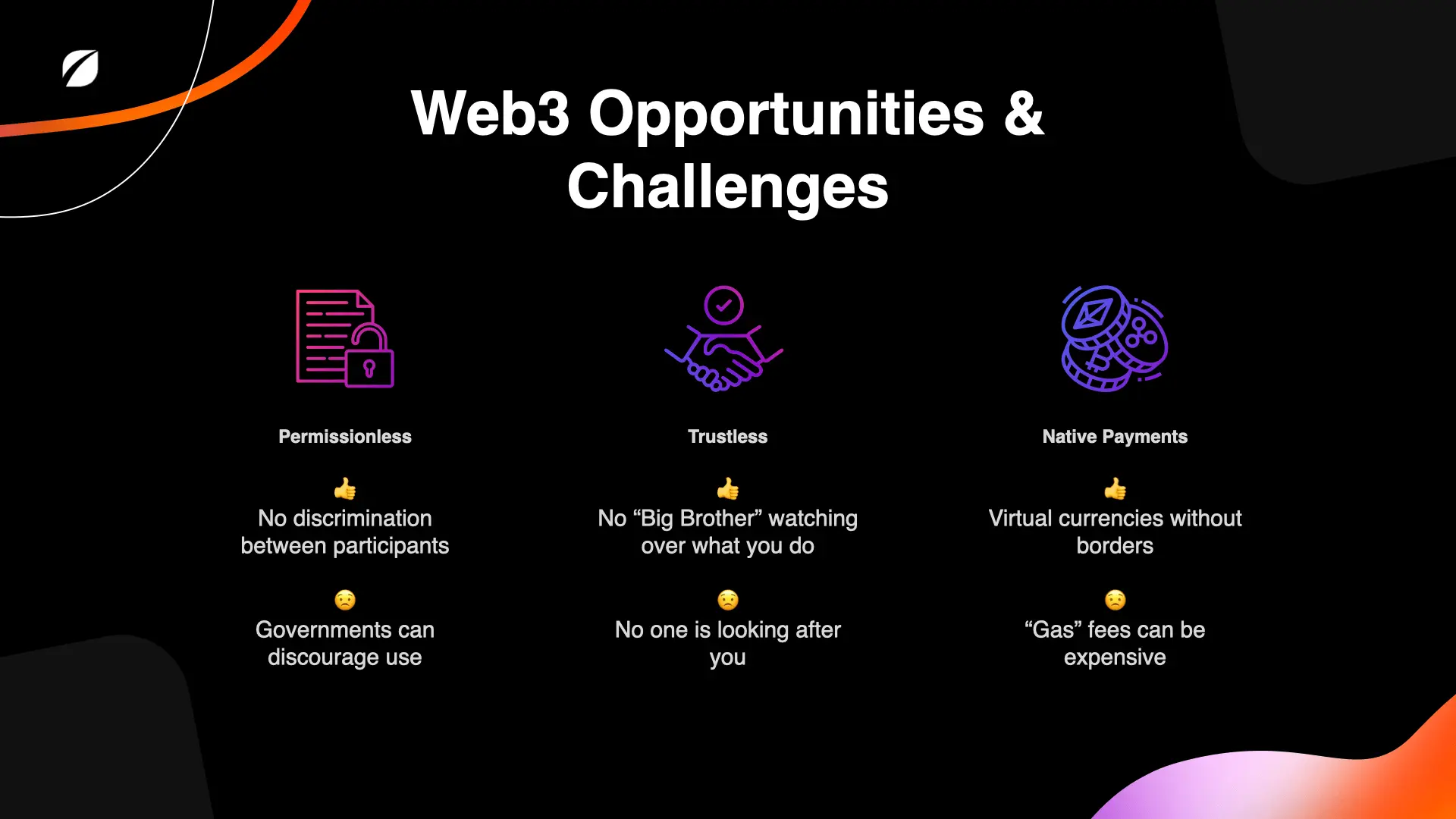
Web3 Development: Challenges and Opportunities for Senior Engineers
2023-Nov-15 • 10 mins
Web3 represents a new paradigm for the internet, emphasizing decentralization and user ownership. Unlike the current Web2, where centralized entities control most of the data and platforms, Web3 aims to put the power back in the hands of users through blockchain technology, cryptography, and decentralized networks. This shift opens up a world of opportunities, but it also brings its own set of challenges for engineers who need to adapt to this new landscape.
One of the significant opportunities in Web3 development is the ability to build decentralized applications (dApps) that run on blockchain networks rather than centralized servers. This fundamentally changes how applications are structured and operated. Developers no longer rely on traditional server-based infrastructure. Instead, they work with decentralized protocols and technologies that allow for a more transparent and secure exchange of data.
In the Web3 ecosystem, blockchain technology plays a pivotal role. By leveraging blockchain's immutable ledger, developers can ensure the integrity and transparency of data without relying on intermediaries. This enables greater trust and security, particularly in applications involving financial transactions, identity verification, or voting systems.
However, building Web3 applications is not without its challenges. Unlike traditional applications, dApps require developers to have a deep understanding of blockchain architecture and cryptographic principles. Smart contracts, the building blocks of decentralized applications, must be written in specific programming languages like Solidity or Rust. These contracts are executed on the blockchain, and once deployed, they are immutable, which means any mistakes or vulnerabilities can be costly.
Moreover, Web3 technologies often come with performance issues that are not typically seen in Web2 development. For example, blockchain networks can experience scalability issues when handling large volumes of transactions. While solutions such as Layer 2 scaling and sharding are being developed, Web3 developers must still work within the constraints of current blockchain technology and find innovative ways to address scalability concerns.
Another challenge that developers face in the Web3 space is the complex user experience (UX) associated with interacting with decentralized applications. Unlike traditional applications, dApps often require users to manage wallets, private keys, and tokens, which can be a barrier to entry for non-technical users. Creating seamless, user-friendly interfaces while maintaining the security and functionality of decentralized systems is an ongoing challenge for engineers.
Despite these challenges, the Web3 ecosystem offers vast opportunities for innovation. As a senior engineer in the space, the chance to contribute to the decentralized future of the internet is incredibly exciting. Whether it’s creating new decentralized finance (DeFi) applications, building secure voting systems, or developing NFTs that empower artists, Web3 has the potential to change the way we interact with the digital world.
Opportunities in Web3 Development
- Enhanced User Privacy
- Decentralized Applications (dApps)
- Ownership Economy
Steps to Begin with Web3
- Learn blockchain basics.
- Explore smart contract languages like Solidity.
- Experiment with dApp frameworks.
Web3 is the internet’s evolution—one that demands innovative problem-solving and adaptability.


Understanding Web3 today is critical for building the internet of tomorrow. As the technology matures, the demand for skilled engineers capable of navigating its complexities will continue to rise. By embracing the challenges and opportunities presented by Web3, developers can play a key role in shaping a decentralized, transparent, and user-owned internet. The future of the web is decentralized, and Web3 is the foundation upon which that future will be built.
Share this blog:
